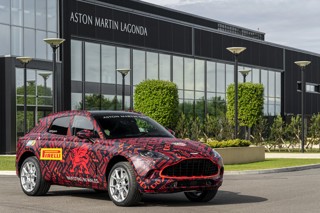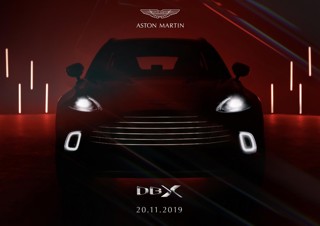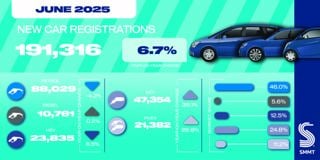James Bond’s favourite carmaker Aston Martin Lagonda last week recorded a £13m loss for the last quarter, pointing to tough trading conditions in the UK and Europe along with disappointing sales of its Vantage two-seater sports car.
Less than a year ago Aston floated with shares priced at £19, valuing the company at some £4.3bn. Things soon turned sour. Since October last year the firm’s shares have nose-dived, and now trade at around £4, valuing the firm at just over £900m.
The firm’s Second Century Strategy Plan (‘the plan’) envisaged seven new models in seven years, starting with the DB11, followed by the Vantage, Vanquish and DBX, the latter being its first SUV.
The two-seater Vantage costs from £120,000, and was the second model in the pipeline. So far sales have been weaker than expected because the two-seater luxury sports car market is in decline.
The firm’s £13.5m loss in the three months to September 30 compares with a profit of just over £3m a year earlier.
Revenues fell 11% to £250m, as wholesale volumes – cars sold to dealers – fell 16% to around 500 cars. Retail sales were down 6%.
Over the first nine months of 2019, Aston Martin has so far stacked up a loss of some £92m compared with a profit of £24m in the same period of 2018.
The company had to borrow £120m at an eye-watering interest rate of 12% a few months ago, ostensibly to help fund DBX production.
In reality most of the money went on paying off existing loans, with just £30m of new funds going into the firm. The bond gave Aston the option to arise another $100m if it takes 1,400 DBX orders.
The firm’s net debts have grown to £800m from £560m at the start of the year. Don’t be surprised if the firm has to raise extra cash.
In an effort to cut costs, Aston has cut R&D spending (never a good sign) by £45m to £300m – according to chief executive Andy Palmer by “doing things smarter”. It is also cutting back on the use of casual workers at its Gaydon plant.
The floatation by Aston a year ago had been criticised for costing £136m which might have been better spent on developing new models. That cost pushed the firm into a £68m annual loss last year.
Palmer recognised that Aston had hit several bumps in the road. “We didn’t expect the downturn in the market, we didn’t expect the delay of Brexit … We are working to the plan and DBX is a key part of that plan,” he said.
Critical to the firm’s hopes of engineering a turnaround will be its - soon to be unveiled - new DBX model. Aston hopes to make up to 5,000 DBXs a year, priced at £158,000.
The DBX will be Aston Martin’s first SUV (on a tour of the Aston Martin factory a couple of years ago the guide told me that Aston didn’t make SUVs as it wasn’t in the market for ‘tractors’ that rather neglected the firm’s historical link to the entrepreneur David Brown which can still be seen in the ‘DB’ name attached to models).
Palmer noted last week that the SUV market was growing globally, and that over 70% of Aston Martin customers already had an SUV in their garage, hence were an “obvious target” for the new model.
The firm hopes that the DBX will appeal more to women in countries such as China and the US, and so help the firm diversify its customer base.
The firm’s third-quarter results showed revenues in the UK down 22% and in Europe, the Middle East and Asia by 17%. The Americas grew by 2% and Asia Pacific fell 34%.
Aston Martin said volumes would be lower than the 6,300 to 6,500 units predicted for 2019 but within the range of City expectations. That came as some relief to beleaguered investors.
“Tough trading conditions, particularly in the UK and Europe, persist” Palmer stated. “We prepared for Brexit all year and have £15m of stock in our Brexit preparations. We continue to be ready for whatever Brexit throws at us. Our hope is that on the December 12 (after the general election) we’ll have a clearer view what Brexit will look like.”
The firm had previously said that it was setting aside £30m to prepare for a No Deal Brexit including £2m for new supply chain routes.
The firm had hired a new supply chain chief, and had stockpiled five days’ worth of components and pallets for carrying engines.
It has also made contingency plans to bring in parts through naval ports if the Calais-Dover route became jammed up, and has said that as a last resort it would fly in components.
The next James Bond film is set to feature four Aston Martin models which the firm hopes will help with sales.
Aston’s high-end ‘specials’ operation continued to deliver a boost to results. In the last quarter it sold six DB4 Zagato Continuation cars at £6m a go (sold as a pair along with new 2019 DBS Zagato).
In recent years Aston has bought in engines and electrical systems from Mercedes-Benz’s through its AMG arm. The latter’s owner Daimler has a 5% stake in Aston.
The real issue is that developing genuinely new cars is now so expensive that even the luxury sports car brands have been snapped up by bigger players.
So longer term, I can see Aston being acquired by Daimler in the way that BMW has acquired Roll-Royce and VW now owns Bentley, Lamborghini and Porsche.
I expect Aston to go the same way at some point.
Author: Professor David Bailey works at the Birmingham Business School and is a senior fellow at the UK in a Changing Europe programme.



















Login to comment
Comments
No comments have been made yet.